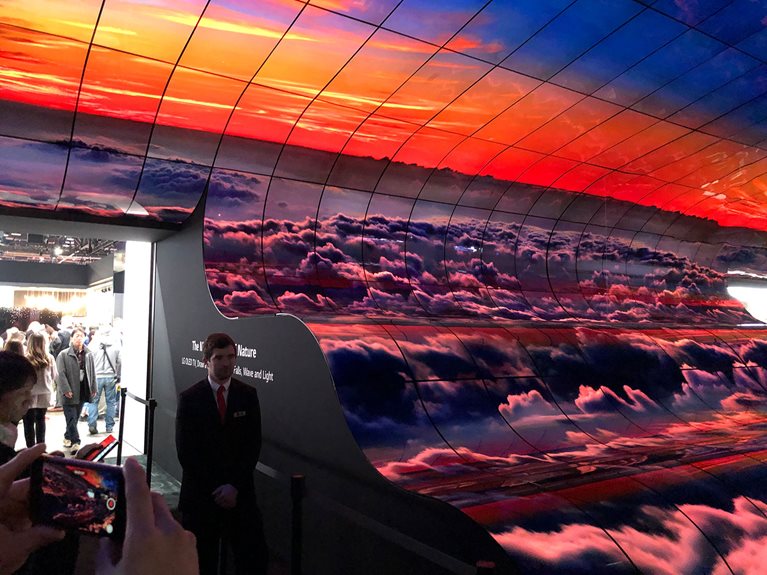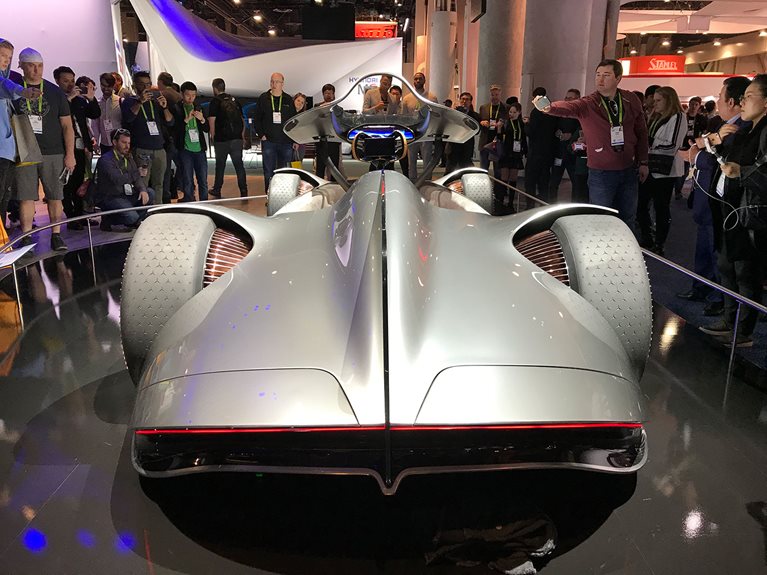The Consumer Electronics Show (CES) is a massive trade show held in Las Vegas every January to showcase the latest and greatest in consumer technology products. It’s an opportunity for businesses to unveil new inventions as they set their tone and focus for the upcoming year. Amazing product releases from top electronics companies at this year’s event showcased the future of televisions, AR/VR, and health and wellness wearables. Car companies continued to tackle the future of autonomous driving and ridesharing, while the battle for smart home devices and connectivity was ever-present in many booths. Read along to discover the trends that stood out to us on our journey through CES 2019.
I am excited to see more medical devices for consumers as well as concept cars and ride sharing options. I can’t wait to see them come to life and move out of the concept world. Additionally, I would LOVE to see more humanitarian efforts highlighted through product development
The Connected Home
The connected home trend continues as more companies develop opportunities for virtual assistants. Amazon and Google continued as key players in the space this year, highlighting their ecosystem of products and the everyday use cases they solve for. While some companies are developing product suites to bridge the gap between smart devices, others are maintaining a focus on stand-alone devices. One home fixtures company, for example, introduced a new suite of products for a connected bathroom, including programmable lighting based on mood or time of day, vanities that reveal their contents while closed, and other embedded smart fixtures. As we move toward a future of discrete apps for each piece of furniture and appliance in our homes, we found ourselves asking: Who will be first to integrate these solutions beyond the simple response to commands that current home assistants are capable of? Until then, we must continue to switch between our sound system app, our oven app, couch app, sleep app and toilet app. You get the idea…
Frankly,I’d like to see less at future CES’s. While there were undoubtedly countless great ideas and new, innovative tech on display, the most striking aspect of the show was the sheer quantity of stuff. Excess, copycats, and tech-for-tech’s-sake has plagued the industry for years and was on full display, ballroom after ballroom. Trimming the fat by being more selective of exhibitors would do CES and the industry some good.
Millennial Parenthood
We observed a noticeable increase in consumer health products, especially surrounding pregnancy, newborns and children. This trend may correlate with the maturing millennial population. Millennials approaching parenting age have high expectations for consumer products technology and their ability to track almost everything. One example that stood out was a pregnancy band that allows pregnant parents to track their baby’s heart rate and heartbeat, its kicks, sleep position and contractions. The traditional baby monitor has also been reimagined, with state-of-the-art features that analyze breath rate, room temperature, motion and sleep patterns.
I always look forward to seeing groundbreaking innovation and new ideas pushing the envelope. In recent years,this has been primarily driven by startups, but in the future I hope to see some of the big players taking bigger risks and accelerating technology.
Another compelling product in the sector was a handheld ultrasound device that allows individuals to self-scan and forward the ultrasound to their doctor for review. This cuts down on office visits and saves money and time—especially for those who live in remote places, have limited mobility or have trouble finding the time for appointments. It may also help smaller clinics avoid having to send patients to specialized testing labs for ultrasounds.
Televisions grow and disappear?!

TVs were front and center at CES and companies showed us that televisions will continue to be a staple in our culture—although they’ll now emerge from furniture or blend into our environment as art when not in use. One standout example was “The Wall,” a modular system of microOLED screens that allows users to configure up to a 219" television that takes up a whole wall. By camouflaging the excess screens as part of the wall, aspect ratio and size can vary. Another prime example was the “Rollable OLED.” This TV’s screen disappears altogether when rolled up into the structure that houses its speakers. It can also be partially displayed for different user experiences.
Innovation was lacking in this year’s CES. Iterative design was the theme and I would personally like to see more radical ideas showcased. Additionally, I enjoy seeing companies reinventing themselves and finding new market potential. Seeing more groups(who are now working on autonomous driving systems)taking risks and finding ways to grow their offering is always exciting.
Augmented Mobility

The road ahead is paved with digital lines. Nearly every automotive participant highlighted the future of an augmented driving and riding experience. Whether with self-driving vehicles or the future of ridesharing, companies are looking at how user interfaces can integrate with mobile experience. We saw a focus on passenger comfort and cabin transit assurance. Older brands are reinventing themselves to accommodate this new frontier while atypical brands are jumping on the mobility bandwagon, so they don’t miss the chance to be purveyors in the space.

The Snapshot—Our Designers Weigh In
What are you hoping to see at future CES shows?